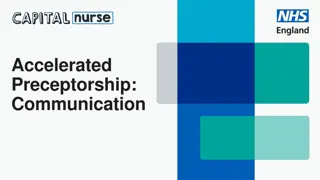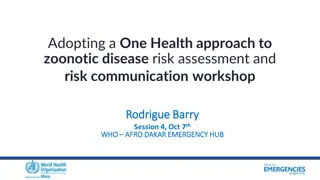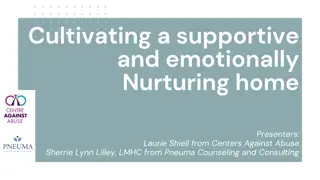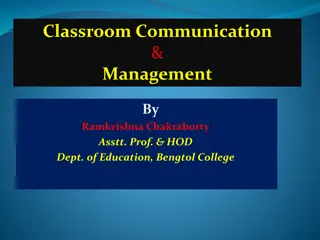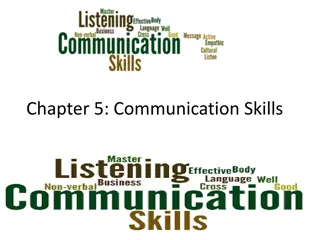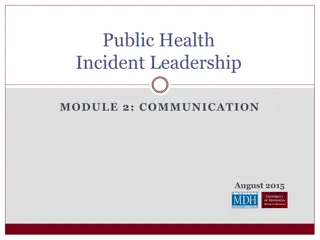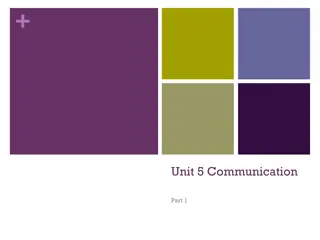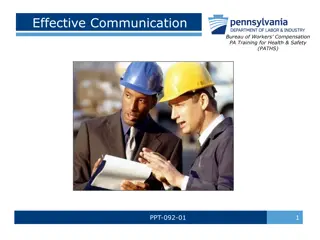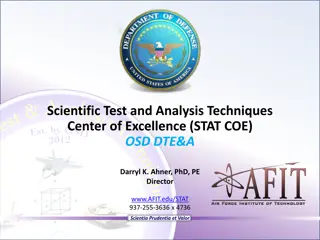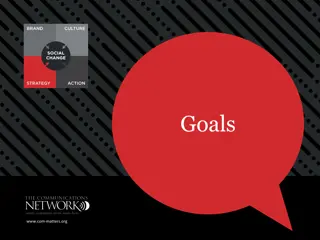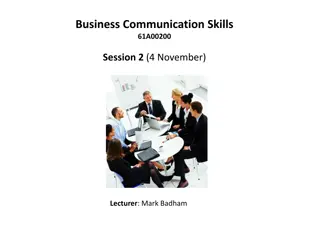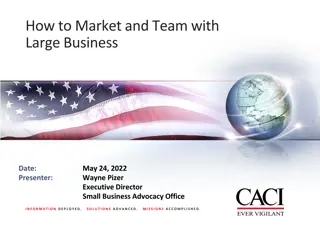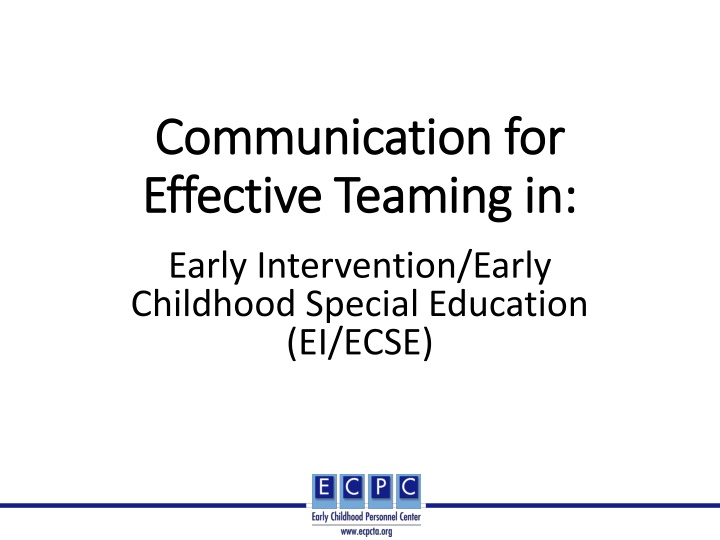
Effective Teaming in Early Intervention and Special Education
Learn about communication strategies, recommended practices, and objectives for effective teaming in Early Intervention/Early Childhood Special Education. Explore active listening, problem-solving, conflict resolution, and alternative communication means within the team.
Download Presentation

Please find below an Image/Link to download the presentation.
The content on the website is provided AS IS for your information and personal use only. It may not be sold, licensed, or shared on other websites without obtaining consent from the author. If you encounter any issues during the download, it is possible that the publisher has removed the file from their server.
You are allowed to download the files provided on this website for personal or commercial use, subject to the condition that they are used lawfully. All files are the property of their respective owners.
The content on the website is provided AS IS for your information and personal use only. It may not be sold, licensed, or shared on other websites without obtaining consent from the author.
E N D
Presentation Transcript
Communication for Communication for Effective Teaming in: Effective Teaming in: Early Intervention/Early Childhood Special Education (EI/ECSE)
EI/ECSE Standard 3, EI/ECSE Standard 3, Component 3.1 Component 3.1 Candidates apply teaming models, skills, and processes, including appropriate uses of technology, when collaborating and communicating with families; professionals representing multiple disciplines, skills, expertise, and roles; and community partners and agencies.
DEC Recommended DEC Recommended Practices (RPs, 2014) Practices (RPs, 2014) TC2 Practitioners and families work together as a team to systematically and regularly exchange expertise, knowledge, and information to build team capacity and jointly solve problems, plan, and implement interventions. TC3 Practitioners use communication and group facilitation strategies to enhance team functioning and interpersonal relationships with and among team members.
Objectives Objectives Active listening strategies. Describe Processes for problem-solving and conflict resolution. Identify Identify and describe Alternative means for communication within the team.
Communication Communication The process of sending and receiving information and ideas between individuals using a common system of symbols, signs, or behavior.
Communication Communication Strategies Include: Strategies Include: Active listening Nonverbal communication Paraphrasing Questioning
Listening Listening Listening is the process of receiving, interpreting, and reacting/responding to a message from another person.
Why Listen? Why Listen? To obtain information, To understand, To learn, and For enjoyment.
Active Listening Active Listening A conscious effort to hear the words that another person says and more importantly, the complete message that person is attempting to communicate.
Active Listening Techniques Active Listening Techniques 1. Pay attention, 2. Show that you are listening, 3. Provide feedback, 4. Defer judgment, and 5. Respond appropriately.
Improve Your Listening Skills with Improve Your Listening Skills with Active Listening Active Listening Improve Your Listening Skills with Active Listening (2:39) Watch the video and: Describe the five active listening techniques. Reflect on which techniques you currently use. Reflect on which technique(s) you want to practice improving.
Nonverbal Communication to Nonverbal Communication to Demonstrate Listening Demonstrate Listening Eye contact, Facial expressions, Head nods, Leaning forward, Arm movement, Body posture, and Utterances such as, yes , unhum .
Paraphrasing Paraphrasing Why to clarify or verify a point(s) the speaker made, How - summarize what the speaker said, and How ask the speaker if that is accurate or what they intended to communicate.
Asking Questions Asking Questions Open-ended questions require thought and more than one-word response; more comprehensive answer based on speaker s knowledge. Close-ended questions require a one-word or short phrase response.
Connect Video 3.4: Connect Video 3.4: Conversation with Examples of Seeking Conversation with Examples of Seeking and Verifying Information and Verifying Information Connect Video 3.4: Conversation with Examples of Seeking and Verifying Information (2:39) Watch the video and identify: Examples of the five active listening techniques. Examples paraphrasing (i.e., clarifying, verifying). Examples of open and close ended questions.
Barriers to Effective Listening Barriers to Effective Listening Environmental conditions, Distance from speaker, Attitude of the listener, Speed of speaking, Speaker s nonverbal communication, and Language of the speaker.
Problem Solving Problem Solving The process of identifying a problem, developing possible solutions, and taking a course of action.
Stages of Problem Solving Stages of Problem Solving 1. Identify the problem. 2. Define the context of the problem. 3. Explore possible solutions. 4. Select the perceived best solution. 5. Implement the selected solution. 6. Monitor outcomes and seek feedback.
Conflict Resolution Conflict Resolution
Conflict Conflict A serious disagreement between two or more individuals.
Conflict Resolution: Definition Conflict Resolution: Definition The process by which two or more individuals find a peaceful solution to their dispute.
Conflict Resolution: A Five Conflict Resolution: A Five Step Process Step Process 1. Clarify what the conflict is. 2. Establish a desired outcome for the conflict. 3. Discuss possible solutions for achieving the common outcome. 4. Decide on the best solution for resolving the conflict. 5. Agree on a solution and the responsibilities of each individual.
Visual Example of the Five Different Visual Example of the Five Different Conflict Resolution Styles Conflict Resolution Styles Visual Example of the Five Different Conflict Resolution Styles (3:34) Watch the video and identify: The different conflict resolution styles that you observe in your current team. The style that is most representative of you. The style(s) that seem(s) most conducive to resolving conflicts in a team. Why?
Communicating with Communicating with Interpreters Interpreters
IDEA States That The Team Must: IDEA States That The Team Must: (iv) Consider the communication needs of the child, and in the case of the child who is deaf or hard of hearing, consider the language and communication needs, opportunities for direct communication with peers and professionals in the child s language and communication mode, academic level, and full range of needs including opportunities for direct instruction in the child s language and communication mode, and (v) Consider whether the child requires assistive communication devices and services. IDEA Sec. 1414 (d) (3) (B)
IDEA Also States That: IDEA Also States That: Use of interpreters or other action, as appropriate. The public agency must take whatever action is necessary to ensure that the parent understands the proceedings of the IEP Team meeting, including arranging for an interpreter for parents with deafness or whose native language is other than English. Sec.300.322(e)
Need for Sign Language Need for Sign Language Interpreters (CDC, 2017) Interpreters (CDC, 2017) Over 98% of U.S. newborns received a hearing screening. About 6,500 U.S. infants were identified with a permanent hearing loss The prevalence of hearing loss in 2017 was 1.7 per 1,000 babies screened. It is unclear as to how many of these children communicate with sign language.
Need for Foreign Language Need for Foreign Language Interpreters Interpreters According to the most recent U.S. Census data: One out of five children live in families where at least 1 parent was foreign born. Of those children, 26% live in households where no one over 13 years old speaks English fluently.
Roles of Interpreters Roles of Interpreters Conduit acts as means for what is said by one individual to reach another individual. Clarifier checks for understanding of what is said and asks speaker to repeat or state/sign in a different way. Cultural broker/mediator detects cultural misunderstandings and provides cultural framework to clear up the misunderstanding.
Things to Consider When Working Things to Consider When Working With Interpreters With Interpreters Review the tips for working with sign language and language interpreters: 10 Tips for Using a Sign Language Interpreter Best Practices for Communicating Through an Interpreter Identify the similarities and difference in the tips and practices provided. Which do you think will be the easiest to implement? The most difficult?
Communicating With Communicating With Technology Technology
Using Video to Promote Using Video to Promote Communication Communication Use of video can assist professionals and the family to: Review child and adult performance, make recommendations, and monitor progress. Facilitate reflective and constructive feedback on specific interventions. Support decision-making about individual goals/outcomes.
Using Video Conferencing to Using Video Conferencing to Promote Communication Promote Communication Make home visits and co-visits, Conduct team meetings, Attend center-based programs virtually, Promote family to family connections, Conduct observations of staff and provide reflective supervision, and Provide professional development activities.
Compliance with Federal Policy Compliance with Federal Policy U.S Department of Health and Human Services and the U.S. Department of Education s Office of Special Education and Rehabilitation announced that compliance with HIPAA, IDEA, Section 504 of the Rehabilitation Act, and Title II of the Americans with Disabilities Act are NOT barriers to using video conferencing. (Edelman, 2020)
Using Video and Video Using Video and Video Conferencing to Enable Team Conferencing to Enable Team Meetings over Distances Meetings over Distances Using Video and Video Conferencing to Enable Team Meetings over Distances (6:35) Watch the video and: Reflect on the benefits of virtual meetings for team members that were identified. Reflect on the challenges of virtual meetings for team members that were identified. Identify, based on your participation in videoconferencing, additional benefits and challenges you have experienced?
References and Resources References and Resources Centers for Disease Control (CDC). 2017 Annual data early hearing detection and intervention (EHDI) program summary. CDC. https://www.cdc.gov/ncbddd/hearingloss/ehdi-data2017.html Division for Early Childhood (DEC). (2014). DEC recommended practices. DEC. Early Childhood Personnel Center (ECPC). (n.d.). Curriculum modules: Professional standards standard 3. ECPC. Edelman, L. (2020). Video conferencing 101. Early Childhood Technical Assistance Center. https://ectacenter.org/~pdfs/topics/disaster/Video_Conferencing_101.pdf U.S. Department of Education. (n.d.). IDEA: Individuals with Disabilities Education Act, Sec.1414 (d) (3) (B). U.S. Department of Education. U.S. Department of Education. (n.d.). IDEA: Individuals with Disabilities Education Act, Sec.300.322. U.S. Department of Education.
Disclaimer Disclaimer This is a product of the Early Childhood Personnel Center (ECPC) awarded to the University of Connecticut Center for Excellence in Developmental Disabilities and was made possible by Cooperative Agreement #H325B170008 which is funded by the U.S. Department of Education, Office of Special Education Programs. However, those contents do not necessarily represent the policy of the Department of Education, and you should not assume endorsement by the Federal Government.

